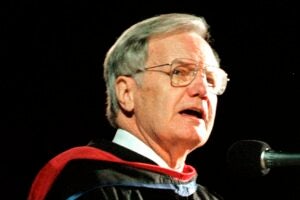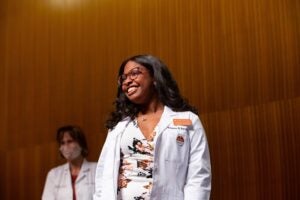Mark Helper traveled to the site of an asteroid impact on a remote Arctic island last summer to simulate a geological expedition on the moon.
“It’s been 40 years since humans first set foot on the moon,” said Helper, a distinguished senior lecturer at the Jackson School of Geosciences. “When we go back — unlike the Apollo missions we’ll have robots to help out. What we’re trying to do is figure out how best to divide the work between humans and robots.”
Helper’s job was to imagine he was an astronaut visiting the moon for the first time and trying to learn as much as he could about the geology. He rode in a simulated lunar rover and donned a spacesuit to explore the barren landscape up close.
Read more about Marc Helper’s geological expedition.



